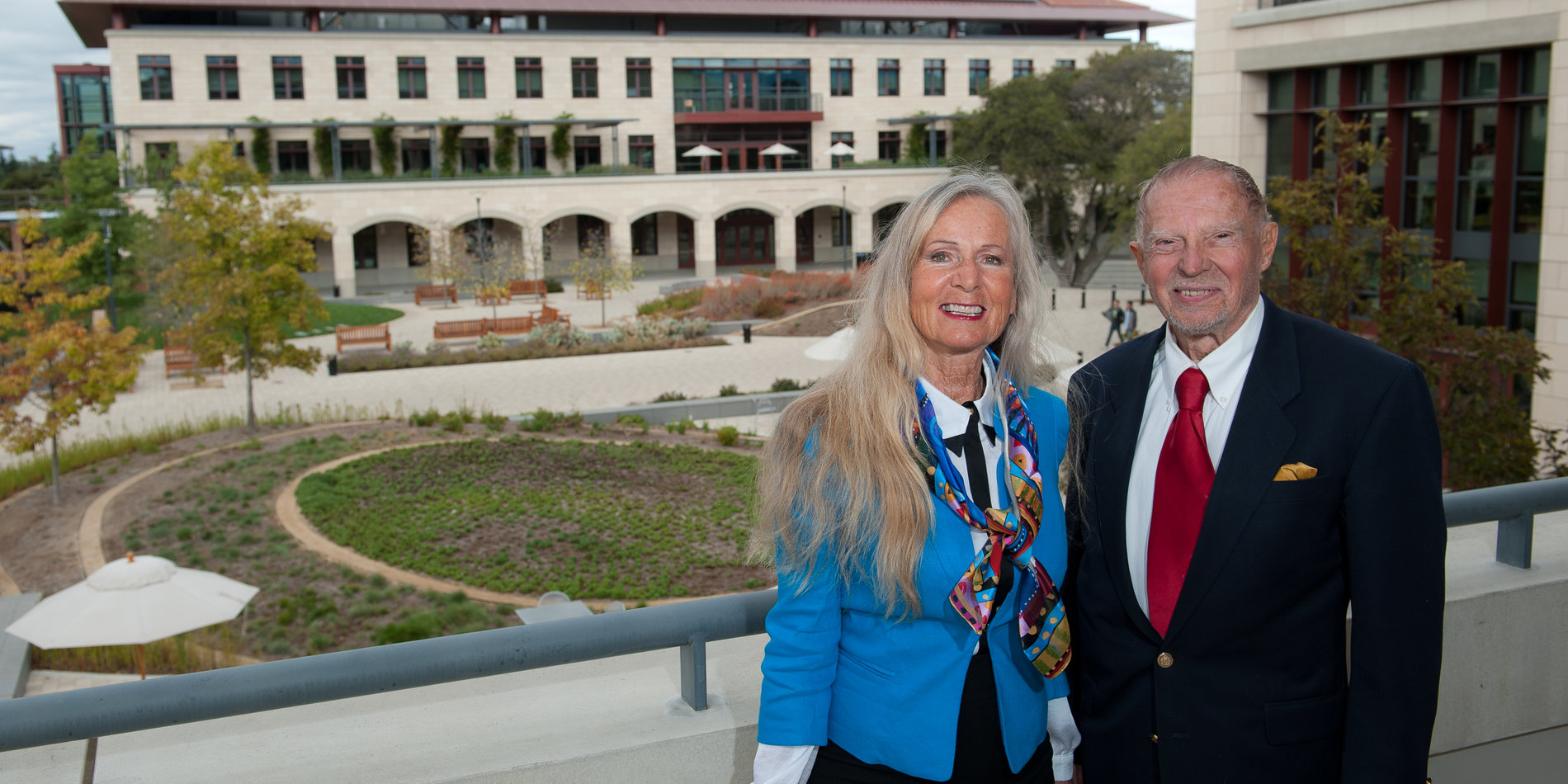A gift from a dedicated Stanford family continues a legacy of support
Anna Marie Spilker, an economist, Bay Area real estate investor, and wife of the late James J. Spilker, Jr. (BS ’55 Eng, MS ’56 Eng, PhD ’58 Eng), an early pioneer of the technology that underpins the Global Positioning System, has established a charitable gift annuity to help advance innovative aerospace research and educate future generations of engineering leaders.
Her gift, which will benefit the James and Anna Marie Spilker Chair of the Department of Aeronautics and Astronautics in the Stanford School of Engineering, represents the latest in the couple’s decades-long relationship with Stanford.
James, who passed away in 2019 at the age of 86, and Anna Marie have a history of service and giving to Stanford Engineering spanning more than half a century. Over the years the couple has given more than $33 million to support several areas in the School of Engineering, including the naming of the James and Anna Marie Spilker Engineering and Applied Sciences Building in Stanford’s Science and Engineering Quad, and to endow the James and Anna Marie Spilker Professorship, held by Stanford University Provost Persis Drell, and the aeronautics and astronautics chair, held by Charbel Farhat.
“Since its opening in 2013, the Spilker Building has provided an incredible infrastructure – space, equipment, and community – that will accelerate the pace of scientific discovery and technology for decades to come,” said Jennifer Widom, the Frederick Emmons Terman Dean of the School of Engineering and Fletcher Jones Professor in Computer Science.
The building houses the Edward L. Ginzton Laboratory as well as shared resources, including the powerful Titan microscope, that allow for advanced nanoscale observation, patterning, and characterization.
The couple has also provided capital support for Stanford’s Durand Building, home to the Department of Aeronautics and Astronautics.
“The Stanford Engineering community is incredibly grateful for the Spilker family’s longstanding leadership and generosity,” said Farhat, the James and Anna Marie Spilker Chair of the Department of Aeronautics and Astronautics. “Their support provides our students and faculty with the resources needed to think broadly and creatively about the global engineering challenges of the future – a lasting tribute to the Spilkers’ remarkable vision. This latest gift continues this remarkable legacy.”
Anna Marie and James both came from humble beginnings, and attribute much of their success to their education. Anna Marie received a BA in Economics from UC Santa Cruz and an MBA from Cal State East Bay. She is a licensed real estate broker and the founder and president of New Pacific Investments Inc., and has had a successful career as a real estate investor and manager in Silicon Valley.
James was a Stanford alumnus three times over, earning his BS in 1955, MS in 1956, and PhD in 1958. He dedicated his career to creating a robust and reliable Global Positioning System (GPS). James’ innovative work on the original GPS architecture and signal structure helped revolutionize global navigation.
After completing his PhD, he joined Lockheed Research Labs, and throughout the 1960s he wrote a number of papers on the signal timing technology that enabled the precision tracking of satellites required for GPS.
James later worked for Ford Aerospace, where he designed and implemented the payload for the world’s first military satellite communications system. Along with two Ford colleagues, James later co-founded Stanford Telecommunications, a company he would lead as chairman and CEO for the next 26 years.
In 2000 James returned to Stanford – first as a consulting professor of electrical engineering, and later as a consulting professor of aeronautics and astronautics. He was instrumental in creating the Stanford University Center for Position, Navigation, and Time in 2005. The following year he co-founded and was named chairman of AOSense Corporation, a developer and manufacturer of atom-optic sensors for precision navigation, time and frequency standards, and gravity measurement.
In 2019, shortly before his death, James was named a laureate of the prestigious Queen Elizabeth Prize for Engineering for his work on GPS. The prize recognizes a groundbreaking engineering innovation that is of global benefit to humanity.
“Jim’s lifelong mission was to share his knowledge and talents with the world audience,” said Anna Marie. “He cared about others and wanted to solve the engineering problems that could and would serve humanity.”




